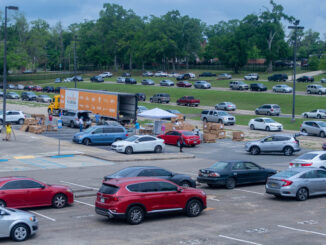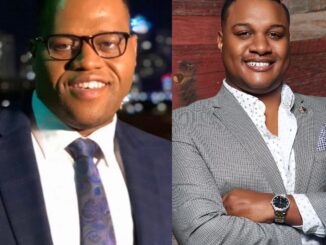
By Christian Crittenden
Twenty minutes before tip-off on March 11 between the Utah Jazz and Oklahoma City Thunder, league officials stormed the court to stop the game. Jazz center Rudy Gobert had tested positive for COVID-19, and fans were told to leave the arena. There would be no game.
In the blink of an eye, all live sporting events were canceled. Fans had no choice but to stay inside, reminisce on old highlights and watch “The Last Dance,” Michael Jordan’s monthlong reminder that he is the greatest of all time.
Two months after the nationwide shutdown, the Ultimate Fighting Championship was back in the octagon fighting, but this time in an empty arena with no fans. Soon after, the National Basketball Association and Major League Baseball began negotiating a restart, while the National Football Association was celebrating a successful virtual draft.
The pandemic has brought many different twists and turns, and professional sports leagues have had to navigate to a “new normal.”
Bubble Life
The NBA and NBA Players Association agreed on finishing their season, which was about a month away from the much anticipated postseason. The league decided on a 22-team bubble that would have teams living and playing in a single location, Disneyworld in Orlando, Florida.
Teams within six games of the final playoff spots in each conference were invited. That left eight teams at home to begin preparation for next season.
Some players opted out of the resumed season because they or other members of their families were at high risk. To address player safety, the league established strict protocols to test players daily, and masks are required across the campus for everyone, from players to ball boys to journalists.
In the latest rounds of testing, the NBA reported zero cases of COVID-19, which may be why players can be seen during games slapping high-fives and hugging.
ESPN’s The Undefeated reporter Marc Spears, who is inside of the bubble, had to quarantine for seven days when he first arrived, along with the rest of the members of the media.
“I think the NBA has done a fabulous, painstaking job of making sure the players are in a safe environment, the media is in a safe environment and everyone inside the bubble is in a safe environment,” Spears said.
Some players feared that a return to playing games would take the focus from the work being done towards social justice. But Spears notes that they have kept those issues at the forefront.
“They have not stopped beating the drum,” Spears said. “They haven’t been quiet, and now that the games are starting, they even have a higher platform because people are more in tune during the game.”
In this last portion of the season, each team inside the bubble will play eight games for seeding purposes. In the event that any team is within four games of the eighth and final playoff seed, it will trigger a play-in tournament for the final spot.
If everything goes according to plan, the playoffs will begin on Aug. 17 and end in mid-October with the draft coming a few days later. Family and guests are slated to be able to arrive on Aug. 30.
Baseball on the Brink
After months of back and forth, Major League Baseball and its players association could not agree on how to proceed with a regular season. That left commissioner Rob Manfred to implement a 60-game season with an expanded 16 team playoff.
“There’s a lot of different protocols they have to go through and a lot of loops they have to go through to be able to get this season in,” said Julian McWilliams, who covers the Red Sox for the Boston Globe.
The Red Sox have converted their luxury suites into the acting clubhouse to allow for social distancing. Players also aren’t allowed to spit or eat sunflowers seeds on the field.
While the MLB had good intentions with these protocols, players can be seen during games not wearing masks or socially distancing. The results of these actions have shown up quickly. The league didn’t make it two weeks before an outbreak occurred.
The first came a week ago when the Miami Marlins knew four players had tested positive for COVID-19 but still let those players take the field against the Philadelphia Phillies. The domino effect of the first outbreak coupled with a second outbreak within the St. Louis Cardinals has caused six series to be postponed.
With only a 66-day window for 60 games, the league may be stuck with playing seven-inning doubleheaders or canceling games, which could impact the 16-game playoff-seeding.
A 60-man taxi squad was made to replace sick or injured players. Teams have yet to use that option because it raises the issue of the competitive imbalance.
The league conducts COVID testing every other day instead of every day, and the results are done in a lab in Utah, which takes about 48 hours to turn around.
Manfred issued a warning to the teams that the season would be canceled if they could not control the virus.
Will Football Play?
NFL training camp started last week, and before players could enter the team facility, they had to have three negative COVID tests in a row. Once they entered camp, everyday testing was required for the players for the first two weeks.
The season is scheduled to begin on Sept. 10 with a matchup between the Houstons Texans and Super Bowl Champion Kansas City Chiefs. No preseason games are being played, and a contingency plan is in place to push the season back if need be.
In college football, the NCAA has allowed teams to start camp through August. The Power-5 conferences have all gone to a conference-only schedule that will start in late September. Other conferences appear ready to follow that lead.
The pared-down schedule will hurt teams that depend on non-conference games for revenue to support their programs. They will see the effect on their bottom line.
With about a month remaining until the scheduled start dates, it remains to be seen if either college or professional teams will play this upcoming season.




Be the first to comment